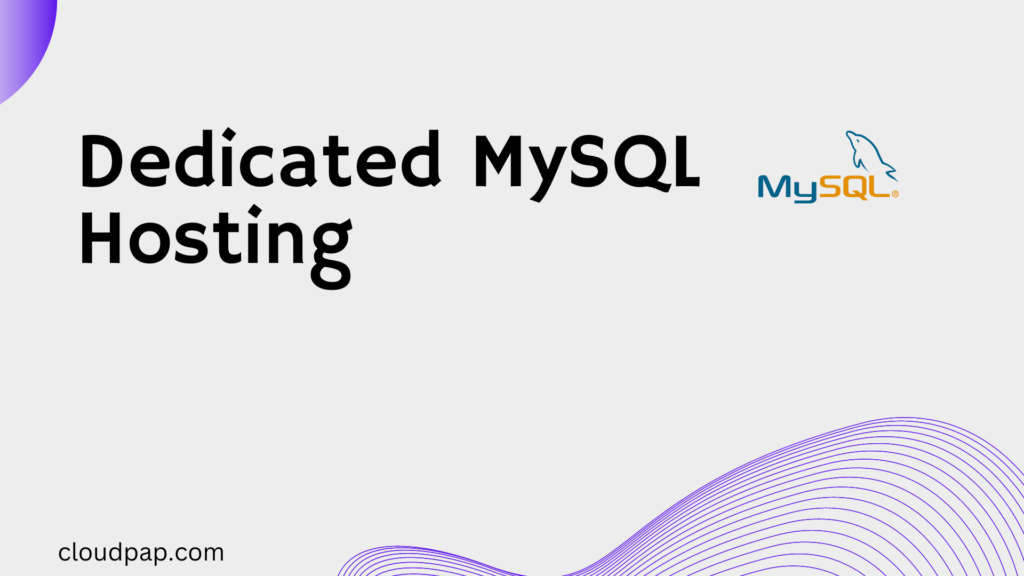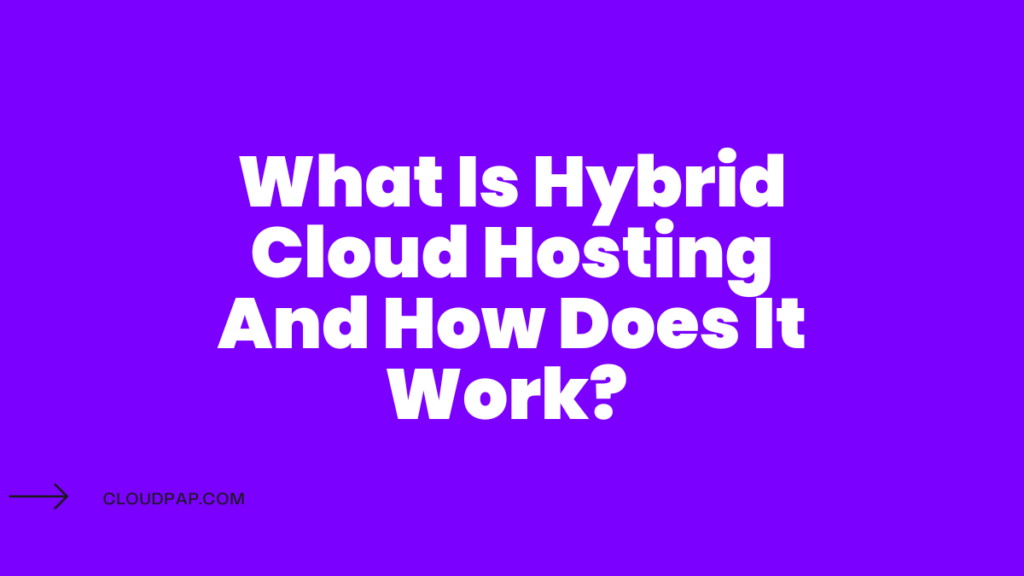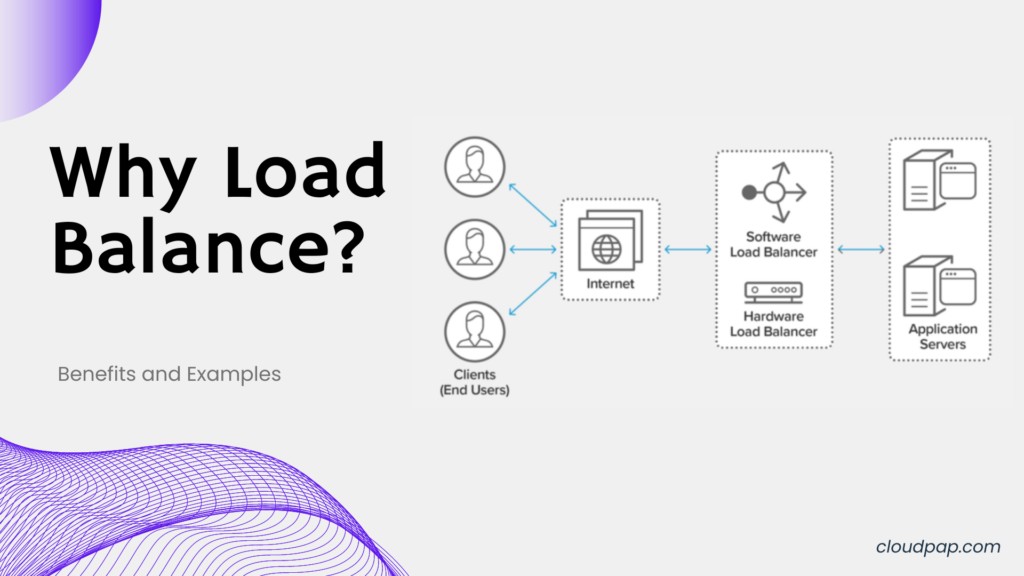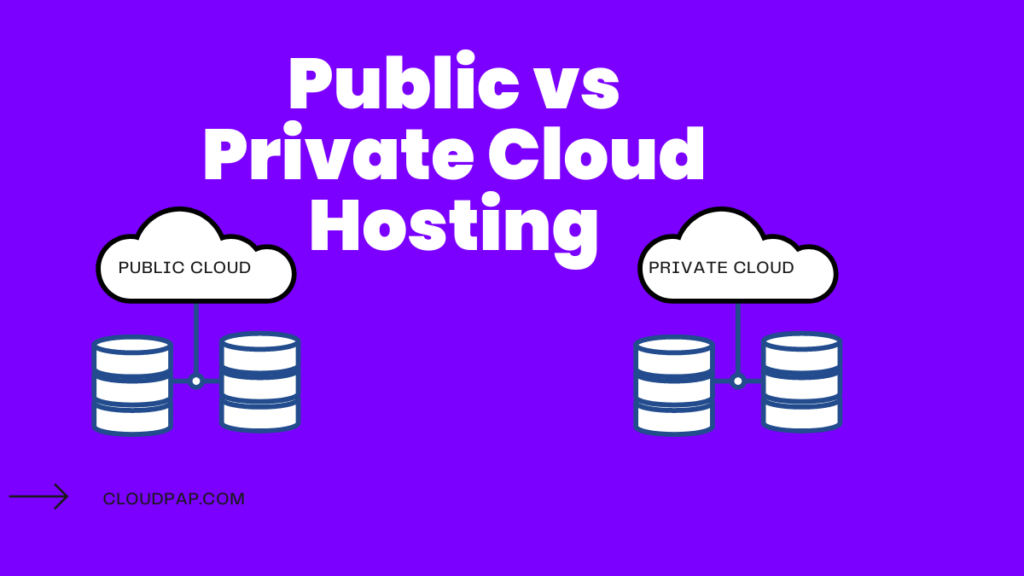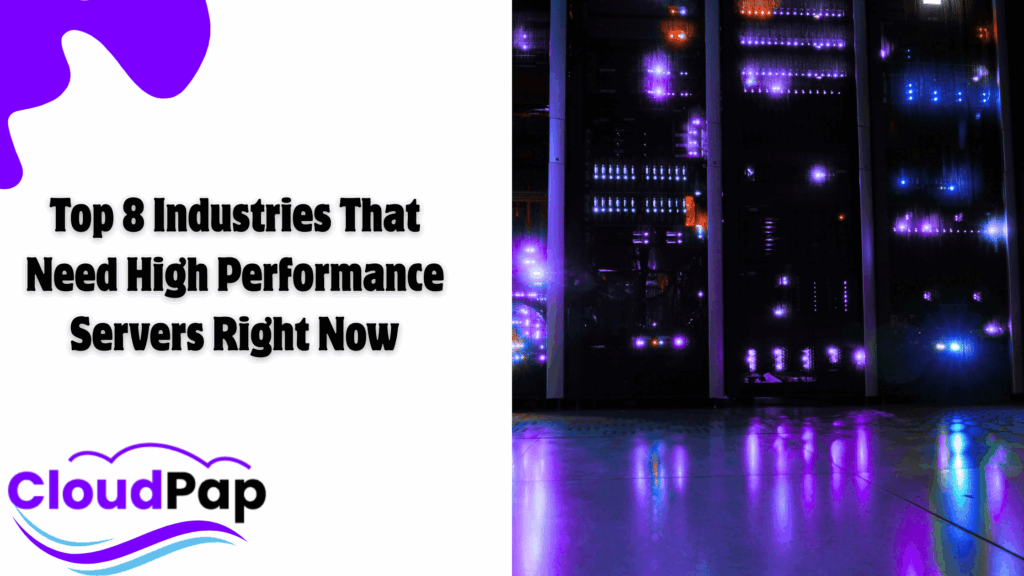Have you been looking for reliable free VPS providers but keep running into hidden fees or hard-to-understand offers? Many promise free plans but leave you with restrictions or catch you with upsells.
Getting a truly free VPS can be tough, but knowing which options are out there gives you a big advantage.
You want to get started fast, without worrying about payment or complicated sign-ups. In this post, you’ll learn about seven free VPS providers worth checking out in 2025.
Each has its strengths and limits, so it helps to compare before deciding.
If you want something better than standard free options, consider Cloudpap as a strong alternative. This service gives you more flexibility, better support, and fewer headaches right from the start. Keep reading to see which free VPS makes sense for you, and why many see Cloudpap as a smarter choice compared to the rest.
What Is VPS Hosting?
VPS hosting is like renting a private room in a shared house. You get your own space (dedicated CPU, RAM, and storage) on a server, but others use the same physical machine.
This setup gives you more control and power than shared hosting.
- Root access: You can fully manage the server, install software, and tweak settings.
- Dedicated resources: Your VPS has fixed CPU, RAM, and storage, so neighbors don’t slow you down.
- KVM virtualization: A technology that creates isolated virtual servers, ensuring privacy and performance.
Free VPS hosting often comes with limits, like low RAM or bandwidth. It’s great for testing or small projects but may not handle heavy traffic.
Overview of Free VPS Providers
When you need a server but don’t want to spend money right away, free VPS providers sound great. You get your own space, more control than shared hosting, and a chance to try things out without risk.
With a free virtual private server, you can host websites, run small apps, or learn basic server management. These plans fit students, developers, or anyone testing projects before making a purchase.
Even though the word “free” is attractive, there are important tradeoffs. Most no-cost VPS plans have strict limits on resources, support, reliability, and features.
Key Features of Free VPS Plans
Free VPS providers usually give you the basics to get started. You get access to a virtual private server that includes root access, so you can install software and make changes to the system.
Many providers use open-source operating systems like Linux. Common specs include:
| Feature | Typical Offering |
|---|---|
| RAM | 512MB – 1GB |
| Storage | 5GB – 20GB SSD |
| Bandwidth | 100GB – 1TB/month |
| CPU Cores | 1 – 2 |
| Uptime | 95% – 99% |
Providers may also offer simple control panels, snapshots, or basic firewall settings.
Limitations of No-Cost VPS Services
No-cost VPS hosting comes with serious limits. Providers often give much less RAM, storage, and bandwidth than paid plans. Many restrict you to a single server or allow only a basic operating system.
Expect slow response times for support. Most free providers offer help only by email or forums, with no live chat or phone support. You are often last in line if problems come up.
Many providers may remove your VPS without warning if you use too many resources or break their rules. You may also see ads or promotions inside your control panel.
Other restrictions include:
- Limited or no automatic backups
- Fewer options for scaling or adding features
- Possible downtime during “maintenance windows”
When searching for a no-cost plan, be careful. Many popular free VPS hosts have hidden costs, strict rules, or short trial periods. If you need more power, reliability, or support, you may need to look at paid alternatives or better free options like Flaunt CloudPap.
Listing the 7 Best Free VPS Providers
1) Amazon Web Services (AWS) Free Tier
AWS offers a free tier with 750 hours per month of a t2.micro or t3.micro instance for 12 months. A micro instance is a small virtual server with 1 CPU and 1GB RAM. It’s enough for basic apps or learning cloud computing.
You need a credit card for signup, but AWS won’t charge if you stay within the free limits. You can run Linux or Windows and choose from global data centers.
Pros:
- Trusted platform used by big companies
- Great for testing lightweight apps
- Easy to upgrade to paid plans
Cons:
- Credit card required for verification
- Complex for beginners
- Charges apply if you exceed 750 hours
Best for: Developers or students learning cloud setups.
2) Oracle Cloud Free Tier
Oracle Cloud provides an always-free tier with two Arm-based virtual machines. Each has 4 CPUs and 12GB RAM, totaling 24GB RAM—impressive for free. Arm is a type of processor that’s fast but may not work with all software.
No payment is needed, though some regions require a credit card for verification. You get 200GB storage and 10TB monthly data transfer, ideal for small sites or apps.
Pros:
- Generous resources (24GB RAM)
- No time limit on free usage
- Reliable global data centers
Cons:
- Arm processors may not support some apps
- Setup can be tricky
- Credit card may be needed
Best for: Hobbyists or small businesses needing strong free VPS.
3) FreeVPSHosti
FreeVPSHosti gives you a free VPS with 1 CPU, 512MB RAM, and 10GB SSD storage. You get 100GB monthly bandwidth, enough for a small site or test project. No credit card is required—just sign up and start.
This provider uses KVM virtualization for isolated, secure servers. Support is basic, and you might need to engage in their forum to keep the plan active.
Pros:
- No payment or credit card needed
- Quick setup for small projects
- Includes DDoS protection
Cons:
- Limited resources for bigger apps
- Less reliable than big providers
- Basic support only
Best for: Beginners testing simple VPS setups.
4) VPSWALA
VPSWALA offers a free VPS trial with 1 CPU, 1GB RAM, and 20GB NVMe SSD storage. NVMe SSD is a fast storage type that speeds up your server. You also get 1TB bandwidth and no credit card requirement.
You can choose Linux or Windows and pick from 29+ global locations. The trial duration isn’t always clear, so check terms to avoid surprises.
Pros:
- Decent resources for testing
- No payment needed
- Supports multiple operating systems
Cons:
- Trial length varies
- Limited support
- Less established provider
Best for: Short-term projects or app testing.
5) x10Hosting
x10Hosting provides a free cloud-based hosting plan that acts like a VPS. You get 512MB RAM, 1 CPU, and unlimited storage and bandwidth. It uses cPanel, a user-friendly dashboard for managing your server.
This isn’t a true VPS, as resources are shared, and you don’t get full root access. You might need to post on their forum to keep the account active.
Pros:
- Easy for beginners
- No cost or credit card
- Unlimited resources (with limits)
Cons:
- Shared hosting, not true VPS
- No root access
- Slower performance
Best for: Small personal sites or blogs.
6) GitHub Student Developer Pack
If you’re a student, the GitHub Student Developer Pack offers free VPS credits through partners like DigitalOcean ($200 for 60 days) or Azure.
You’ll need a university email to verify eligibility.
DigitalOcean’s credits give you access to Droplets (VPS) with 1-2 CPUs and 1-4GB RAM. It’s a great way to learn server management without paying.
Pros:
- High-quality VPS from trusted providers
- Free for students
- Good for learning
Cons:
- Only for students
- Credits expire (e.g., 60 days)
- Setup can be complex
Best for: Students studying cloud computing.
7) Open Source Project Support
Contribute to open source projects? Providers like DigitalOcean and Linode offer free VPS credits for active contributors. You’ll need to show proof, like GitHub commits.
Credits vary (e.g., $100-$200 from DigitalOcean) and give you access to VPS with 1-2 CPUs and 1-8GB RAM. This is temporary but renewable for ongoing projects.
Pros:
- Free for open source developers
- Reliable VPS providers
- Supports community work
Cons:
- Requires project proof
- Credits are time-limited
- Application process can be strict
Best for: Open source contributors.
Quick Comparison Table
| Provider | RAM | Storage | Bandwidth | Credit Card Needed? | Best For |
|---|---|---|---|---|---|
| AWS Free Tier | 1GB | Limited | Limited | Yes | Developers, students |
| Oracle Cloud Free Tier | 24GB (2 VMs) | 200GB | 10TB/month | Sometimes | Hobbyists, small businesses |
| FreeVPSHosti | 512MB | 10GB SSD | 100GB/month | No | Beginners, test projects |
| VPSWALA | 1GB | 20GB NVMe SSD | 1TB | No | Short-term testing |
| x10Hosting | 512MB | Unlimited | Unlimited | No | Small sites, beginners |
| GitHub Student Pack | 1-4GB | Varies | Varies | No | Students |
| Open Source Support | 1-8GB | Varies | Varies | No | Open source developers |
Why Free VPS Hosting Might Not Be the Solution
Free VPS hosting sounds great, but it has drawbacks. You’ll often face limits that can frustrate your plans. Here’s why free VPS might not work for you.
a) Security Measures
Security standards are not always as high on free servers as paid ones. Basic protections—like firewall controls and limited DDoS prevention—are included by most providers.
You need to stay active with updates and password changes.
- Hostinger, Google Cloud, AWS, Azure: Provide secure infrastructure, but you must set up your own software security.
- Webdock: Basic DDoS protection and user-access controls.
- FreeVPS.org: Community-managed with variable security; you are responsible for securing your own VPS.
- Oracle Cloud: Strong physical security, but software hardening is your responsibility.
Extra caution is needed for always-free providers. You are sharing space with many others, which may pose privacy and stability issues.
If you handle personal data or sensitive files, consider a provider with solid security reviews, or a paid alternative like Cloudpap, for added peace of mind.
b) Performance and Uptime
You shouldn’t expect top speed and uptime from free plans. These servers use shared hardware and cut back on resources to save costs.
- Hostinger, AWS, Google Cloud, Azure: Known for reliable hardware, but the free plans are throttled. You may notice slowdowns or forced restarts during busy hours.
- Webdock and FreeVPS.org: Designed for small websites or testing. Your server could be rebooted or paused if you’re using too many resources.
- Oracle Cloud’s free tier: Decent for development, but limited RAM and CPU mean you can’t run big projects.
In most cases, free VPS works for testing apps, learning Linux commands, or running a tiny website. For mission-critical projects or business sites, free options are not enough.
c) Limited Resources
Free plans give you small amounts of RAM (like 512MB) or storage (10GB). These are fine for tiny projects but struggle with busy websites or complex apps. You might hit performance issues during traffic spikes.
d) Unreliable Providers
Smaller providers like FreeVPSHosti or VPSWALA may have uptime problems. Their servers might go offline, disrupting your site or app. Big names like AWS and Oracle are more stable but harder to set up.
e) Hidden Requirements
Some free plans require forum activity (x10Hosting) or project proof (open source credits). Others, like AWS, need a credit card, and accidental overuse can lead to charges. These conditions can feel restrictive.
f) Lack of Support
Free VPS often comes with minimal support. If your server crashes, you might wait days for help or get none. Paid plans offer faster, 24/7 assistance.
g) Not Scalable
Your project might grow, but free VPS plans rarely scale. You’ll need to switch to a paid provider, which means migrating your data—a hassle. Starting with a scalable provider saves time later.
Discover Cloudpap: A Better Alternative
If free VPS hosting feels too limited, consider Cloudpap. We offer affordable, reliable VPS hosting that grows with you, all at a cost. Our VPS Hosting start from as low as $10 depending on your environment.
You get SSD storage for fast performance and full root access to customize your server. Plans start low, making it budget-friendly for startups or hobbyists. Cloudpap’s 24/7 support ensures you’re never stuck.
Unlike free providers, Cloudpap offers 99.9% uptime and easy scaling. Whether you’re hosting a blog, app, or e-commerce site, Cloudpap delivers.
Final Thoughts
Free VPS hosting is a great way to test servers or run small projects without spending money. Providers like Oracle Cloud and AWS offer robust free tiers, while FreeVPSHosti and VPSWALA require no credit card. Students and open source contributors can tap into credits from DigitalOcean or Linode.
But free plans have limits—low resources, basic support, and potential reliability issues. For serious projects, a paid provider like Cloudpap offers better performance and peace of mind. Visit cloudpap.com to explore affordable plans.
Choose the provider that fits your needs, and start experimenting today. Have questions? Let me know, and I’ll help you pick the best option.
Choosing the Right VPS Provider
Choosing a VPS provider can impact your uptime, speed, and budget in a big way. You want solutions that offer strong privacy, clear upgrade paths, and fair pricing.
Not every free VPS provider gives the same value—some come with limited resources, while others sneak in hidden costs later. Looking at providers like Cloudpap or alternatives such as Flaunt, you need to keep an eye on more than just the word “free.”
Some providers limit key features as soon as you sign up. Others shine with a smooth interface, fast support, or flexible plans if you grow. Making the right choice means knowing exactly what you need right now and in the future.
Assessing Individual Needs
Start by listing out the reasons you need a VPS. Common uses include:
- Hosting a website
- Running a small app
- Testing a new script
- Storing private files
Think about how much memory, storage, and bandwidth you’ll need.
Review customer support response times, backup options, and how easy it is to change settings. Poor support or hidden fees can turn a free VPS into a source of stress.
Long-Term Scalability
Your needs may grow fast. If you plan to add more websites, users, or apps, your provider must have flexible upgrade options. Some free VPS hosting choices require you to switch completely when you outgrow them, which risks lost data or downtime.
Look for clear information about upgrade paths. Choose services with a plan structure like this:
- Free tier: Basic memory, storage, and bandwidth
- Low-cost starter: Adds more resources
- High-end plans: Scale up to handle heavier traffic
If you outgrow a free plan, you want the option to pay for more power without losing your work. Check user reviews for complaints about surprise costs or shutdowns. Smooth upgrades, no hidden limits, and direct support matter when your project takes off.

